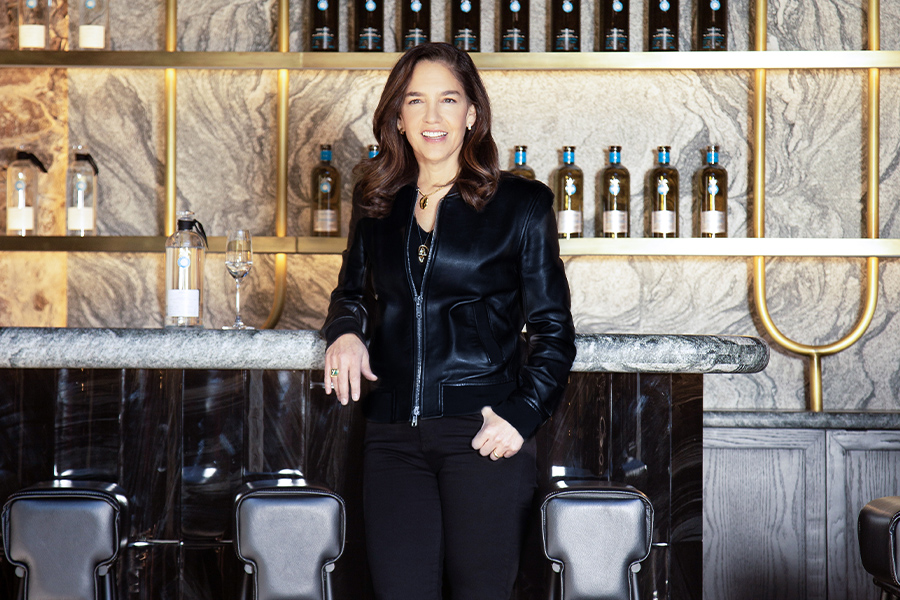By collaborating with an A-list roster of talents, real estate development behemoth Related has imbued countless public spaces and residential units with striking designs. As executive vice president of Related California, Phoebe Yee leads the architecture and design for all market rate and mixed-income residential developments throughout the state.
Raised in Texas, but frequently traveling to see family in Hong Kong and Taipei, Yee’s global perspective was shaped early on. She studied fine arts and economics at Georgetown University, followed by architecture school at UCLA. She then spent 13 years at HKS Architects, and since 2006, has spearheaded numerous developments for Related.
These include such vibrant San Francisco newcomers as the amenity-laden Fifteen Fifty designed by Skidmore, Owings & Merrill (SOM) and Marmol Radziner, and the Avery, which melds architecture from OMA and Anne Fougeron with interiors by Clodagh Design and stars the AvroKO-crafted restaurant Akikos. Here, Yee shares her holistic approach to design.
How did your love of travel inform your career path?
Phoebe Yee: My parents gave my brother and I the gift of traveling, and that’s something I love to do. That influences a lot of the work I’m interested in and the people I’m interested in working with. Travel tells us who we are, who we want to be—it opens our minds. Coming from a place that I didn’t necessarily look like everybody else also was a great reminder that the world is big. Those are all good lessons that I carry with me as we try to think about who lives in our buildings and who we are designing for.
What do you love most about your job?
PY: I zoom out, and I zoom in. I think about the perfect piece of art for a room or even the accessories or books on the shelves. We are detail-oriented in all those touch points, but we also understand the implications of planning for a neighborhood and working at scale.

The library at the MAWD-designed Coterie Cathedral Hill in San Francisco teems with more than 1,500 books
Related, in partnership with Atria Senior Living, has introduced Coterie, a new luxury category for the sector, designed by Handel Architects with interiors by MAWD. Currently in San Francisco, New York, and underway in Santa Clara, California, what makes this concept stand out?
PY: It feels like a community in a different way than our residential buildings because the population is sharing meals and doing activities together—there are a lot of onsite F&B and public spaces—in a place that doesn’t feel institutional. It feels luxe, but they still have the healthcare they need. It’s a great crossover of hospitality sensibilities. Coterie almost feels like you’re on a cruise ship but it doesn’t pull out of the docks.
What is an example of a development that has positively impacted its location?
PY: Mason on Mariposa [a collaboration between David Baker Architects, BAR Architects, Marmol Radziner, and landscape architect David Fletcher of Fletcher Studios]. It’s in Potrero Hill in San Francisco, a lower density neighborhood south of the downtown area. It’s a low-rise building, but it’s spread out across almost 239 residences and townhomes. We have a pedestrian street that goes through it, and it’s beautifully landscaped, which is a big part of the experience. We’ve made it open and accessible. We wove the project into the neighborhood as opposed to gating it off, privatizing it, or making it only open during certain hours. It makes me so happy when I’m there and see people walking through with their dogs or their kids to go to the park.

SOM embraced concrete and terraced glass for Fifteen Fifty’s asymmetric façade
How do you foster positive relationships among the teams you put together?
PY: We make those types of collaborations productive, meaningful, and fun. I have a good sense of humor, and [I put a] small Easter egg in every building. There ends up being some sort of an animal, whether it’s a Jonathan Adler acrylic shark or hippo or sheep sculptures. We don’t take ourselves too seriously.
How do you balance the complexities of building at scale with human-centered design?
PY: I love fretting over the floorplans because that’s where people live, but then also bringing out the finishes and making sure they’re durable but beautiful. It’s hard to do something very specific when you have 500 units, but you also don’t want to make it so generic that it doesn’t feel special. The project management is important but understanding the importance of design—that design has value—that’s the part I love about being an architect. It’s all the things a resident wouldn’t notice, the things that have to work and be super functional but make it feel like home.
This article originally appeared in HD’s July 2023 issue.


